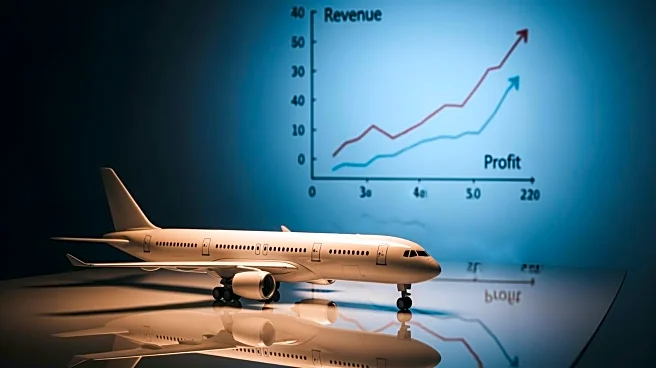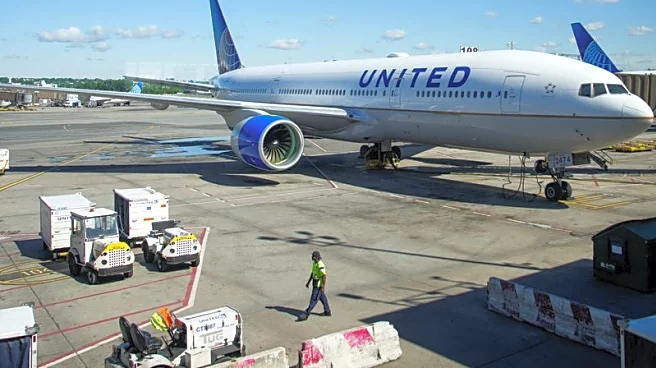What's Happening?
United Airlines has reported a profit for the third quarter of 2025, with operating revenue rising by 2.6% to $15.2 billion, despite a slight decline in profit compared to the previous year. The airline
experienced increases in premium, basic economy, and loyalty revenues as travel demand rebounded after a challenging start to the year, partly due to economic uncertainty. United is investing in onboard enhancements, including Starlink Wi-Fi, with plans for full fleet installation by 2027. The carrier's profit was down 1.7% for the third quarter, but premium revenues increased by 6%.
Why It's Important?
United Airlines' financial performance highlights the resilience of the airline industry amid economic fluctuations. The increase in premium revenues suggests a shift in consumer preferences towards higher-value travel experiences. United's investments in technology and service enhancements reflect strategic efforts to differentiate itself in a competitive market. The airline's ability to maintain profitability despite revenue challenges underscores the importance of operational efficiency and strategic planning in navigating economic uncertainties.
What's Next?
United Airlines will continue to focus on expanding its network and enhancing customer experiences through technology upgrades. The airline's investment in Starlink Wi-Fi and other onboard improvements will be key to attracting and retaining customers. As economic conditions stabilize, United may explore further growth opportunities and partnerships to strengthen its market position. Stakeholders, including investors and industry analysts, will monitor United's performance and strategic initiatives for potential impacts on market dynamics.
Beyond the Headlines
The airline industry's recovery involves complex economic and consumer behavior dynamics. United's focus on premium services and technology upgrades reflects broader trends towards personalized and high-quality travel experiences. The industry's adaptation to changing economic conditions and consumer preferences will influence long-term strategies and competitive landscapes.












